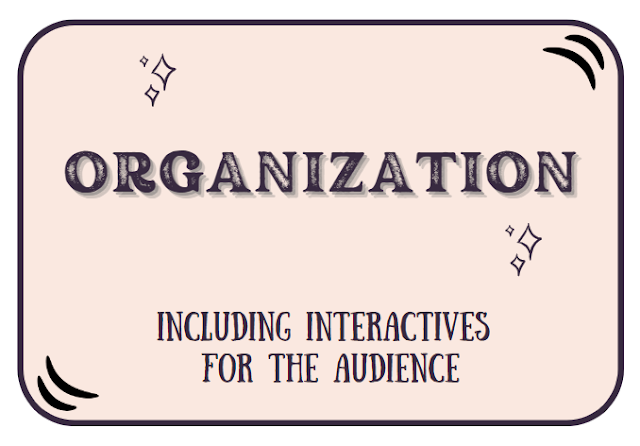Making a Blog Post Engaging - The CONTENT

Contents:
- Addressing an Issue in a Blog Post
- Word Count for CONTENT sections
- How CONTENT Sections Work (5 Sections to Consider)
Addressing an Issue in a Blog Post
A blog post will not look like an academic essay. It follows its own visual arrangement (more on that later), but to get started, it will need to include the internal content specified below.
INTERNAL CONTENT
|
Tentative
Title: _______________________ Introduction:
Overview of the Topic Main Idea 1:
Problem Expanded (Specific Details) – Set the Scene Main Idea 2:
Symptoms Expanded (Specific Details) – Consequences of this Problem (Relate
to your reader) Main Idea 3:
Solution Expanded (Specific Details) – How to fix (Journey of Solving this) Conclusion:
Wrap it Up and Encourage the Audience Work Cited: Include
at least one source usage in the content and a Work Cited section. |
Word Count for CONTENT Sections
In each CONTENT section you create, strive to write less than 300 words.
How Content Sections of a Blog Post Work
The Title
When you used to write papers for school, you probably didn’t spend too much time on your titles. However, in all forms of writing, a title is very important. It is the first thing to hook a reader, and it must be chosen wisely so that the right audience comes to your page. The title needs to grab the audience’s attention while making a promise of what the blog post will be about. By the end of your post, the promise from the title will be fulfilled.The Introduction
The introduction is a very short block of text since it shares space with an image. The image and words grab a reader, draw them in, and sets up the post. When you look at the tutorial image of the ORGANIZATION of a blog post, you will see that the opening (introduction) should be paired up with a half-width image. Choose these words and images carefully. If you do not hook the reader here, they will be gone.The Body
The main body of a blog post will be broken into at least two sections; however, you can have quite a few depending on your topic choice. These body blocks will work “through a logical sequence of points, holding the reader’s attention” (BalkhiI). This means that you need to really plan out your body paragraphs. They will not be quickly typed and sent to the Internet. You want to logically organize them using an outline so that you do not repeat yourself and your ideas are concise. The CONTENT will be in 300-words-or-less blocks. These body blocks will explain to the audience your view on an issue, why it is important, who agrees with you, why, and what they should do as well. It should also include at least one counter-argument to what you are writing. To give the audience a balanced view of the issue, you should let them know that you understand the other side(s). The standard rules for paragraph construction in academic writing are still valid: topic sentence, details, and closing sentence.The Conclusion
The conclusion will be just as brief as the introduction section, but what is important here is that it will call the reader to take action (CTA). It is this CTA that you want to carefully craft. What do you hope to get your audience to do? Be sure to include links to other resources that will move them further to this goal. Do you want them to volunteer to clean up the beaches? Add a link to a local beach clean-up site. Do you want them to reach out to a congressman? Provide the website and contact information for that person. No matter what your goal is in the blog post, you need to make sure that the conclusion block very clearly leads the audience to actually DO it. Be sure to spend plenty of time in this section. This is your last chance with the audience. You want them to feel compelled to do what you say.But WAIT! There is one more very important CONTENT section of your blog post…
The Comments
In blogs with a comment section, it is important for you to create a writing prompt for the audience to know what you are looking for them to focus on. Are you writing about a new set of pots and pans that let you down? Maybe you would prompt the audience to make comments about cookware that they stand behind. Are you writing about a sensitive issue? Ask the audience to share their experiences so that others can see why the topic is so important to them as well.Additional Help
Work Cited
BalkhiI, Syed. “How to Structure a Perfect Blog Post (with
Examples).” Syed Balkhi, 29 Oct. 2015,
syedbalkhi.com/how-to-structure-a-perfect-blog-post-with-examples/.
Haverty, Dan. “How to Structure a Blog Post - Must-Have Elements for Success.” Brafton, 23 Nov. 2021, www.brafton.com/blog/content-writing/blog-post-structure/#Blog%20Post%20Structure%20and%20SEO.



Comments
Post a Comment